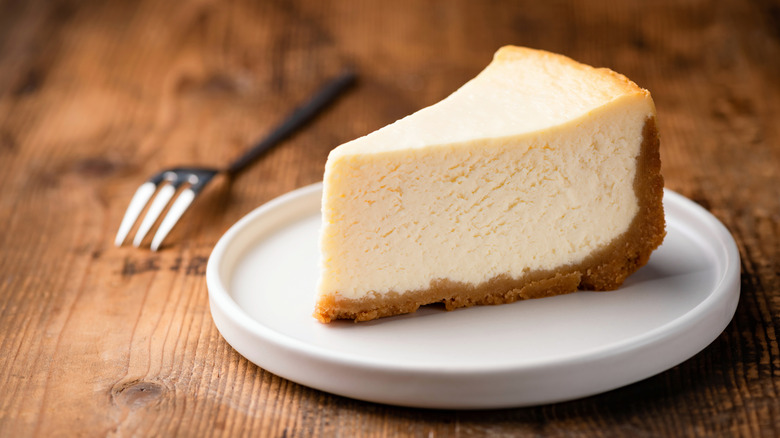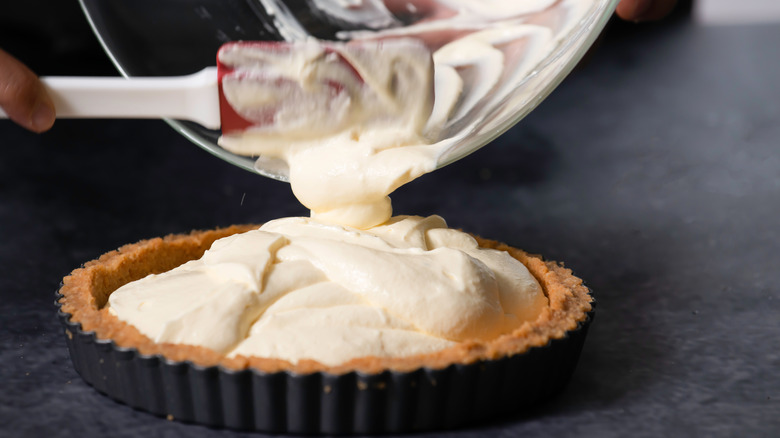You Should Never Use Whipped Cream Cheese For Cheesecake. Here's Why
When you shop for cream cheese, you'll find a number of different options. Aside from the different brands, there's also a low-fat version, a non-pasteurized version also called Neufchâtel cheese, the kind in tubs, and the kind in bricks. When making cheesecake, it's common to grab the bricks, especially since that's the way cream cheese is typically measured in recipes. If you only have tubbed cream cheese on hand, you might be tempted to use that interchangeably, however, the swap could easily mess up your dessert.
According to Cook's Illustrated, cream cheese in the tub, specifically the whipped kind, is actually a different product from the cream cheese that comes in a brick. Whereas block cream cheese is coagulated gradually with cheese culture, whipped cream cheese is instead coagulated with lactic acid. Lactic acid quickens the usual process and is also cheaper, but it produces a much grainier cream cheese. To disguise this, manufacturers whip the cream cheese, and consumers buy it because it's easy to spread.
When you use it in cheesecake, on the other hand, it makes things more difficult.
What happens when you use whipped cream cheese in cheesecake?
If you use whipped cream cheese in your cheesecake batter, you might assume it'll just turn out fluffier. Unfortunately, as The Spruce Eats explains, the amount of extra air that gets added in during the whipping process instead alters the ratios of the other ingredients, ultimately ruining the consistency of your cheesecake. If you simply must use whipped cream cheese in your cheesecake, per Bigger Bolder Baking's suggestion, make sure to use a no-bake cheesecake recipe, and measure the cream cheese by weight rather than volume so you end up with the right amount.
The reason whipped cream cheese only works on no-bake cheesecake recipes, Cook's Illustrated shares, is that heat causes it to turn watery. This doesn't happen with regular cream cheese because it's coagulated in a different way. Whipped cream cheese is made up of a network of proteins, and when that network tightens due to heating, the water contained within it leaks out.
To make your cheesecake fluffier, try using the Japanese method of making cheesecake. This technique, shared by Just One Cookbook, uses regular cream cheese, but adds whipped cream and cake flour. The resulting cheesecake is much airier and won't turn watery like one made with whipped cream cheese.

